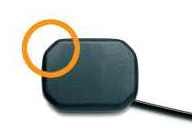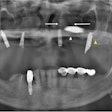
When's the last time you played a vinyl record or wound up your alarm clock? If your answer is "I can't remember," then you're probably ready to make the move from film to digital x-ray equipment, as well.
As we saw in part I of this series, making the switch is well worthwhile. But shopping for such expensive hardware and software (count on spending $20,000 by the time you're done) can be daunting. It takes careful research to make the most of your investment.
The good news is that the differences among vendors are narrowing -- for all the right reasons. Bad products are being replaced by good ones. Any digital imaging company that's survived in the business for a decade or longer is likely to offer a reliable product, says Allan Farman, B.D.S., M.B.A., Ph.D., D.Sc., professor of radiology the University of Louisville.
Still a few key criteria can make a difference. One important specification: Look for an intraoral sensor made with complementary metal oxide semiconductor (CMOS) rather than charged coupled device (CCD). CMOS requires less energy and can plug directly into your computer's USB port, while CCD requires an intermediary box between the sensor and the computer.
Dr. Farman also recommends getting sensors with the data cable coming out the back instead of the side; it is less likely to get in the way when you position the sensor in a patient's mouth.
Perhaps the most important difference is the service and support provided by the vendor and how the equipment fits into your practice.
 |
| Look for a sensor with a cord attached to the back. It's less likely to get in the way. Some people prefer sensors with rounded corners as well. (Photo courtesy of DEXIS.) |
One way to narrow the list of candidates is to only consider those vendors whose imaging software will easily interface with the practice management software you're already using. Tell the vendor what kind of program you're using and ask for details on compatibility.
Likewise, ask about training, warranties, and service plans. Will someone come to your office if telephone troubleshooting fails? Will the company overnight you a new sensor if you accidentally autoclave the one you have?
Next, call the vendor's technical support line and see what kind of response you get. How long do you have to wait on hold? Can you understand the person who answers? Does that person seem ready and able to assist you with whatever problem you present?
Once you've narrowed down the candidates to two or three, Dr. Farman suggests asking for a demonstration in your own office, so you can see what real-world radiographs produced by the unit look like. Note the differences in the shape and feel of the sensors, as well as the holders or positioners. For example, Schick now offers a wireless, cordless sensor. DEXIS advertises a single sensor that can be used for all exposures.
What you need will vary on the kind of dentistry you practice. For example, Dr. Farman prefers corded sensors because he works with mentally disabled patients who sometimes try to swallow them. On the other hand, a pediatric dentist who works with very small children might want a No. 0 size sensor to fit in their tiny mouths.
That's why Dr. Farman advises dentists shopping for x-ray equipment to insist on a demonstration in their own offices and, if possible, on their own patients. Does the cord from the sensor reach to your computer? Does the sensor feel comfortable in your hand and the patient's mouth? Make a few exposures yourself and see how well the images flow into your existing software.
The launch
Once you've made your selection and laid down the cold cash (or got that loan), you may expect a lot from your new toy. Remember, though, that a machine is only as good as its operator. "A lot of people think using digital is going to fix all the problems they had with film," says Gail Williamson, R.D.H., M.S., a professor of dental diagnostic sciences at Indiana University. "But if you don't have good technique with film you're not going to have good technique with digital." (For more on technique, see "Picture perfect x-rays.")
So don't stint on preparation. Allow at least half a day for the vendor to teach all the staff who will be using the equipment. "The training is really important," says Williamson.
And don't think that a half day of training is enough. Trainers have a way of making everything look easy. Once they step outside your door, a fog of confusion may descend. "You have to get a little practice before you go live," says Williamson. "I've had people say they installed the equipment on Friday, went live on Monday and had to cancel all their patients by 10 a.m. that day."
Into the future
So what are you waiting for? "Cone beam," say some radiologists. Cone-beam computed tomography (CBCT) machines can produce 3D images dandy for planning implants or oral surgery. But machines with full-mouth maxillofacial fieldofview often have a big price tag: $180,000 or more. "It takes a lot of work to pay back," notes Dr. Farman.
So if your cone-beam needs are relatively modest, you might consider the new hybrid machines that do panoramic exposures and also offer a cone beam with a relatively small field-of-view. You can get one of these systems for $100,000 from Kodak Dental Imaging or E-Woo Corporation/Vatech. J. Morita is seeking FDA approval for a similar product, says Dr. Farman. If you're not in a rush, wait for the technology to mature and the prices to come down.
And some panoramic machines can now produce limited 3D images. Dr. Farman expects that feature to improve significantly within three years.
In the meantime, the experts say, get that digital intraoral equipment. You won't be sorry!



















